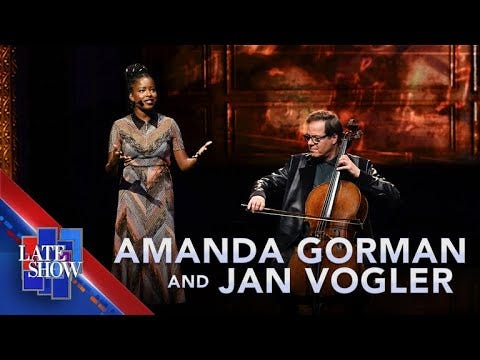Poetry as an ally to the sciences
“We need a unified humanities and science to construct a full and honest picture of what we truly are and what we can become.”
—E. O. Wilson
In the bio for my Substack profile, I list a few descriptors including: Resilient primate. Aspiring naturalist. Intermittent poet. As an “aspiring naturalist,” I have found inspiration and support in the life and work of biologist and naturalist E. O. Wilson, and the E. O. Wilson Biodiversity Foundation, and in particular, the Half-Earth Project and the Educator Ambassadors. (See the Teaching Tools here, organized by grade level.)
Because I am a member of the Half-Earth Project Educator Ambassadors network, I receive occasional emails and announcements. And I follow the foundation on Instagram. A post I read this week especially caught my aspiring naturalist attention and my intermittent poet…the post features a striking photo of a monarch butterfly with text introducing one of the new Master Ambassadors—Robyn Embry—with this headline:
Poetry should be an ally to the sciences.
The body of the Instagram post tells a little more about Robyn:
Robyn Embry, a high school teacher in Mitchell, Indiana, is one of five incredible new Half-Earth Project Master Ambassadors.
She is a recipient of a number of awards, a contributor to the North American Monarch Institute, and a highly-engaged member of the educational community. And she's always had E.O. Wilson's books in her classroom!
Aligned with the ethos of our organization, Robyn published an article that highlights the benefits of integrating science and literature in the classroom.
I tracked down the article referenced and found the PDF, Poetry in the Science Classroom. Here is an excerpt:
Many people, especially children, are adept at creating visions of places seen only in imaginations - places made real by the very act of creation. So, what happens when you ask those same people to imagine places that are very real, to find the poetry in water and earth and stone? And what if students are asked not just to explore the simple beauty of a place, but also to reveal its environmental wisdom, and find their connection to that place through poetry? The result would be children who find their place in the natural world, children who know that water does not just come from tap, children who know their “ecological address” as well as the name of their street, their town, and their county, children who provide hope for the future.
In the article, she goes on to counter the argument that “...combining science with language arts, particularly poetry, dilutes the science and takes time away from more serious endeavors.”
She continues:
Reading poems aloud during environmental study not only enhances children’s sensitivity to the world but also provides models for students as they explore and created their own meanings through writing. These models can help children find their own ways of expressing appreciation of the environmental images and increasing awareness for wise stewardship of Earth’s resources.
Congratulations, Robyn Embry, on your new role as Master Ambassador for the Half-Earth Project.
I think Amanda Gorman, one of my favorite poets, models what E. O. Wilson and Robyn Embry are getting at in this beautiful performance of her poem, “What We Carry.”
From the MDL archives
rabbit tracks. deer tracks. what do we know.
Thanks so much for reading. Be well. And please consider sharing this post with family, friends, teachers, and/or colleagues who might appreciate it.


